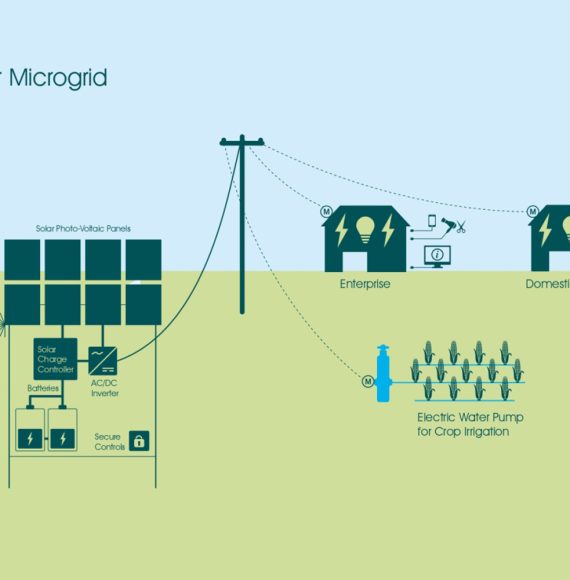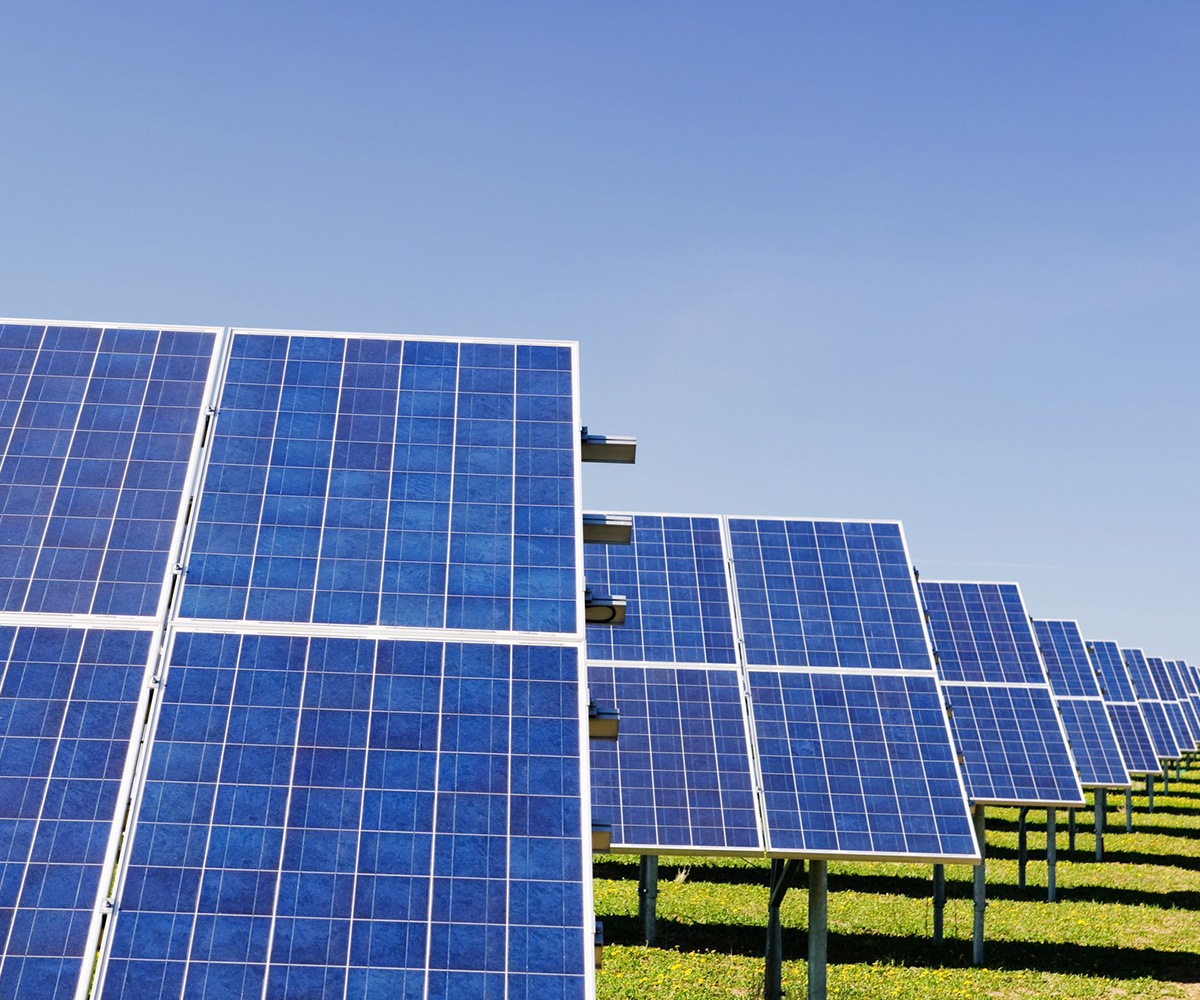Solar Microgrid
Solar Microgrids are integrated networks or ‘grids’ of power. Think of it in the same way that you and your neighbours receive your electricity – through a shared network. Using energy generated from the sun, the system captures, stores, and distributes clean electricity to an entire community. This is done by installing large, high quality solar panels and batteries in a central location. Sometimes called a ‘hub’, this central location is where all the technology is stored in a secure room, often underneath the solar panels themselves. Once the technology has been installed, the solar microgrid is completed by connecting electrical wiring from the central power location to nearby houses, businesses, and farms.

Solar Microgrid appropriate
The solar microgrid is broadly seen as a viable and robust solution to rural electrification around the world. These systems are most appropriate in remote communities that are unable to connect to existing infrastructure provided by the government or private companies. For this reason, they are well-suited for communities on small islands, within mountainous regions, and in remote rural areas. Due to its reliance on the sun, solar microgrids perform at their best in regions that experience lots of sunshine. To deal with cloudy weather, most systems also have storage capabilities that allow them to operate through stretches of sparse sunlight.
Solar microgrids are an exciting renewable energy solution due to their application at any scale and their ability to be expanded later. Some of our solar microgrid systems have a capacity as small as 1.5kw, providing reliable energy to 25 homes and 5 businesses. Other microgrids are expected to have a capacity closer to 15kw, enough energy to power hundreds of households and small businesses. Should a community grow, the solar microgrid can be expanded to connect more families and businesses.
How does the Solar Microgrid really work?
– A solar photovoltaic (PV) array – or group of solar panels – captures and generates electricity from the sun’s light.
– The electricity passes through a solar charge controller. The controller acts as a voltage/current regulator. This protects the batteries and the solar panels from damage caused by overcharging. It also extends the life of the batteries.
– All of the electricity from the PV array is then consolidated in the combiner box. The combiner box provides further protection for the system, minimises power loss, and allows for performance monitoring of the system. It also allows for a single, consolidated connection to the inverter before being sent out to the community.
– Next, some of the electricity is sent directly out to users through the AC/DC inverter. This inverter ensures that users are getting the right type of electric current for their needs.
– Depending on the amount of sunlight available and the amount of power being used by the community, some of the electricity generated is stored in large batteries for future use. The batteries ensure that communities have power at night and during stretches of cloudy weather.
– After power has exited the AC/DC inverter, the electricity passes through meters. These meters allow the community to track usage by consumer.
– Finally, the electricity reaches the household, business, or farm on-demand. There is a secure control panel within the solar microgrid for technicians and community members to monitor, manage, and repair as needed.
– All of the electricity from the PV array is then consolidated in the combiner box. The combiner box provides further protection for the system, minimises power loss, and allows for performance monitoring of the system. It also allows for a single, consolidated connection to the inverter before being sent out to the community.
Request a Free Consultation
Contact us for your no obligation Easy Quote and get started with Us today

